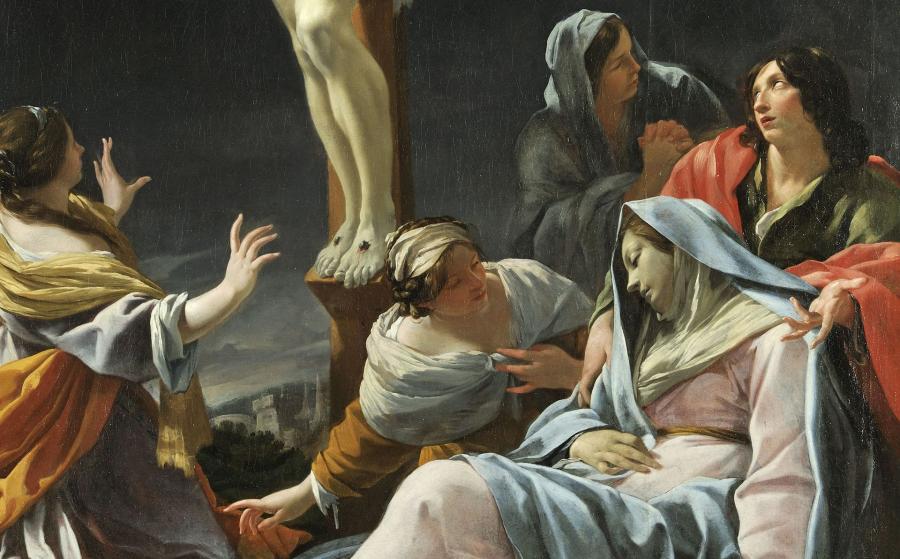The Crucifixion
Information sur l’artiste
Simon Vouet [Paris, 1590 - Paris, 1649]

La Crucifixion, vers 1636-1637.
Image © Lyon MBA - Photo Alain Basset
For the private chapel of his town house, the chancellor Pierre Séguier called on Simon Vouet, who, with his collaborators, prepared a set of paintings on the theme of the life of Christ. Only five of these paintings are known today. They include: The Crucifixion, The Last Supper and The Incredulity of St. Thomas, which are conserved at the Lyon Museum of Fine Arts. However, engravings provide a clue to the other elements of the set. The Crucifixion, which was placed over the main altar, is characterized by an economy of means. At the foot of the cross, two holy women and St. John assist the Virgin Mary, who has fainted, while St. Mary Magdalene, isolated at the left, seems to be seized with dread. Vouet has chosen to represent the precise moment when Christ, leaning his head to one side, dies, as the sky darkens at midday. A beam of light outlines the perfect anatomy of the Son of God, which follows a classical ideal. The majesty of the body, with a whiteness that contrasts with the stormy background, is reinforced by a low-angle view. At the foot of the cross, the group is bathed in an unreal light, which recalls Vouet’s training in the Rome of Caravaggio. It models the figures dressed in ample drapery, accenting the vivid colors and illuminating the pastel tones. Vouet renders the range of emotions through an exchange of gestures and significant glances. Curves and counter-curves reveal the compassion and spiritual intimacy of the three main figures.
Around 1636-1637
Oil on canvas
H. 216; W. 146 cm
Donation of Cardinal Fesch, 1816





